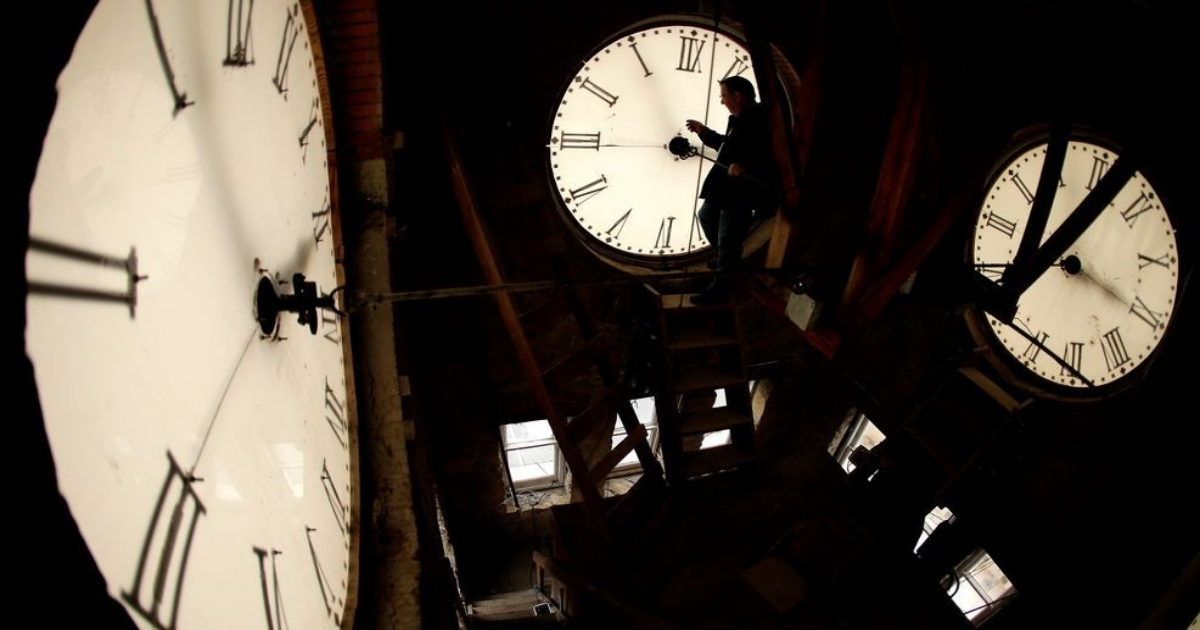WASHINGTON (TNND) — Lawmakers are renewing the debate over whether to end the biannual practice of pushing clocks back and forth an hour as Americans are increasingly supportive of ending the practice and locking into a permanent time standard.
The Senate Committee on Commerce, Science and Transportation held a hearing Thursday examining the issue in what has become a nearly annual exercise for Congress amid debate over how the nation should handle time.
Legislation to stop switching clocks has been introduced annually in Congress but has failed to gain enough traction to become law amid debate over whether daylight saving or standard time is a better option and what would provide the most benefits to health, businesses and safety.
But lawmakers appear to have a growing appetite for making a choice on the issue.
“Congress has the authority to end this outdated and harmful practice. This hearing is an excellent opportunity to examine a thoughtful and rational approach to how we manage time, whether we lock the clock on standard time year-round or on daylight savings time. Let’s think carefully about our health, our economy and well-being, and embrace a sensible approach to time management,” said Sen. Ted Cruz, R-Texas.
Daylight saving time, moving clocks forward one hour during summer has been in place since the 1960s. Advocates of making it permanent say it would bring more light during evening hours and result in more economic activity during the winter when clocks are rolled back and it gets dark sooner. Critics say it would pose a risk to children who would then have to walk to school and bus stops during darkness.
Some health groups have called for ending the annual practice of changing clocks due to concerns that the change hurts sleep, has links to cardiac problems and creates other risks to health and public safety.
Sleep experts have pushed Congress to make standard time the permanent choice to help minimize disruptions to sleep that their research has found have detrimental effects on physical and mental health.
“Permanent standard time would give more Americans to get the opportunity to improve their sleep without even trying. The sun is one of the most powerful drivers of health and well-being, but the timing of sunlight is what’s critically important,” said Dr. Karin Johnson, a physician and neurology professor who testified on behalf of the American Academy of Sleep Medicine. “The adverse effects are greatest in our children, our teenagers and other night owls whose bodies’ clocks already run late.”
Numerous studies have also found car crashes and fatalities along America’s roadways are more likely in the weeks after a time change.
“We know that darkness is associated with increased risk of fatal crashes,” said Dr. David Harkey, president of the Insurance Institute for Highway Safety. “Obviously, adjusting the clock cannot increase the number of daylight hours, but can only shift how they align with work and school schedules since people travel at all times a day, and the risk created by darkness varies by road user type.”
While there is interest in dumping the biannual switching of the clocks, there is little consensus on what the right solution is. Lawmakers, Americans and experts on the issue all hold conflicting views on what change would be preferable, creating an obstacle to Congress taking action on the issue.
“I know I speak for many Americans when I say it’s time. It’s time to figure this out, people across our country are tired of the constant cycle of falling back and springing forward,” said Sen. Lisa Blunt Rochester, D-Del. “We need to stop the clock. We need to find a solution and stick with it.”
There have been multiple efforts over the last several years to move away from the annual tradition of changing clocks twice a year. Companion bills in the House and Senate have been introduced this year, including one referred to the Senate Commerce Committee, to make daylight saving time permanent. Another would give states the power to observe daylight saving year-round.
Just two states, Arizona and Hawaii, observe year-round standard time. States cannot observe permanent daylight saving time but several have passed measures calling on Congress to give states the option or to enact permanent daylight saving time.
It’s unclear what appetite there is in Congress to make a change to moving clocks back and forth. Secretary of State Marco Rubio introduced bills to lock the U.S. into daylight saving time year-round during his time as a Florida senator, which passed the Senate in 2022 under unique circumstances but never gained traction in the House.
President Donald Trump, who has previously been supportive of permanent daylight saving time, said he would not push lawmakers to change it.
“It’s a 50/50 issue, and if something is a 50/50 issue, it’s hard to get excited about it,” Trump told reporters in the Oval Office last month. “It’s something I can do, but a lot of people like it one way. A lot of people like it the other way. It’s very even. And usually, I find when that’s the case, what else do we have to do?”
Polling has found that most Americans want to stop switching the clocks twice a year but what the permanent solution should be remains more elusive. A Gallup poll conducted earlier this year found 54% of Americans are ready to do away with the switch. But among those, 48% wanted standard time year-round, 24% would prefer permanent daylight saving time and 19% would stick to the current system.
